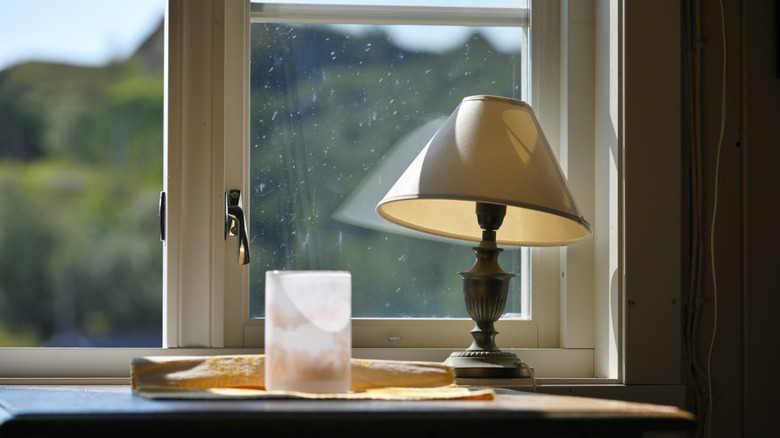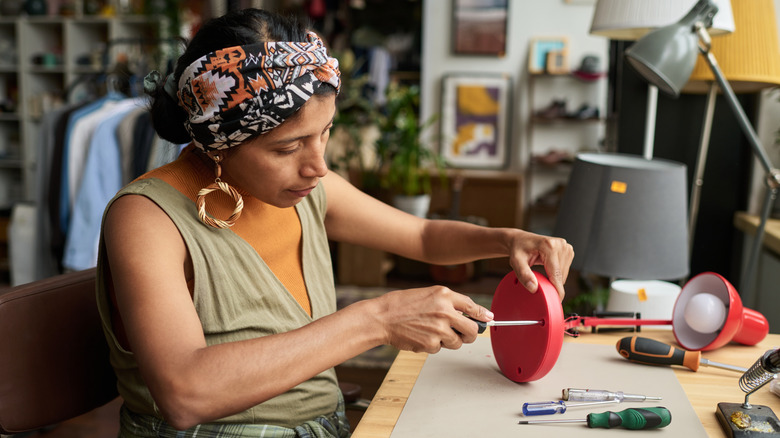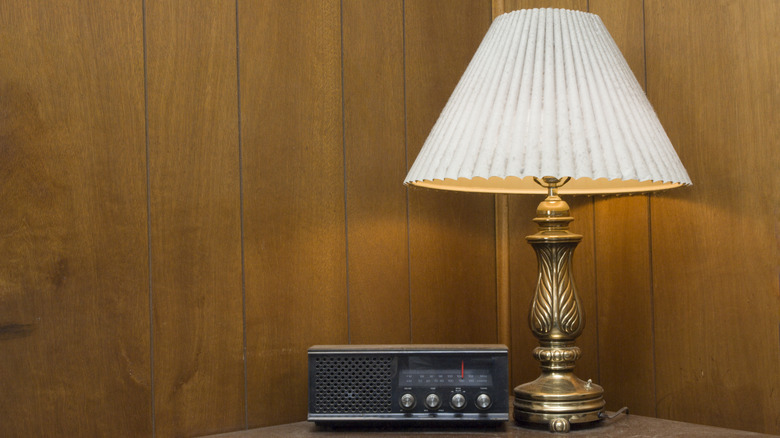The Skill That Lets You Make Any Thrifted Lamp Work Like New Again
We may receive a commission on purchases made from links.
Thrifting is an amazing way to shop sustainably and find some amazing, unique pieces, including some cool vintage ones. Whether you learn how to tell if a thrift store lamp is worth anything or simply look for something that speaks to you without considering value, you can find some truly special pieces. It is always a good idea to inspect secondhand items before buying them, but you may be disappointed when examining vintage lamps, because you could find that the lamp needs rewiring to be safe enough to use or even work at all. The easiest way to tell that a lamp should be rewired if there is visible damage to the cord, such as fraying or tears, or if the internal wiring is exposed anywhere. Another reason to rewire is if your lamp has two identical prongs on the plug. These plugs are outdated and, if plugged into an outlet upside down, can increase the risk of an electrical shock. Finally, if the lamp does not turn on with a new lightbulb, it may be because it needs to be rewired.
To rewire a vintage lamp, you need a lamp rewiring kit, screwdriver, electrical tape, multimeter, needle nose pliers, and a wire stripper. Lamp rewiring kits come in a variety of aesthetic options and can include a lamp socket, a plastic-covered lamp cord, running thread nipples, a locking washer, and a hex nut. These kits are often quite affordable, such as the B&P Lamp Antique Brass Socket with Matching Cord Set and Basic Hardware available on Amazon for about $15.
How to rewire a lamp
With your tools and new rewiring kit, you can quickly complete this project. If you risked testing the lamp by plugging it in, start by unplugging it. Then, begin to disassemble your lamp by removing the bulb to access the socket and the base of the lamp to free up the cord. Gently unscrew and lift the old socket shell until the you find the wires inside. Disconnect the wires from the terminal screws in the socket, and then you can untie the underwriter's knot and pull the cord from the lamp's base. If the cord's path seems particularly complex, there is a small hack that may help. Before you remove the old cord, cut off the plug from the old cord and temporarily attach the new and old cords by tying them together or using electrical tape. As you pull out the old cord, the new cord will take its place and save you from struggling to feed the new cord through. Detach the cords, and you are good to go.
Cut any excess cord length that you do not want from the side without the plug, which should be at the top of your lamp once threaded through, but leave about 6 inches to tie an underwriter's knot. Split the cord so you have about 3 inches of separated wires, and strip about 3/4 of an inch from the ends of each. Wrap the stripped wire clockwise around the corresponding terminals, ensuring that all of the stripped wire is underneath the screw head before tightening the screws.
Benefits of learning to rewire
Once your lamp is correctly rewired, you can replace the lightbulb and test it out. Overall, the process should be relatively simple, safe, and achievable even for someone without very much electrical experience. If your rewiring seemed successful but the lamp still does not work, you may have a faulty switch, a damaged connection point where the bulb screws in, or a defective fuse if the plug has a built-in fuse. While you wait to figure out the problem, you can check out HGTV's Jenn Todryk's explanation of the easiest fix for a broken lamp, which involves placing a puck light inside the lamp so it can be used without repairs.
Now that you know you can fix up and use nearly any gorgeous vintage lamp that you find in a thrift store, you should how to find the perfect vintage lamps for your space. You will be revitalizing a special decor piece, saving it from becoming garbage. Buying secondhand appliances is more sustainable than purchasing new items from stores because it keeps them out of landfills and means that manufacturers do not need to produce as many new items. So, your new repair skill of rewiring vintage lamps both improves the aesthetic of your home and the well-being of the environment. Also, it is worth remembering that not only is this process fairly straightforward on a small bedside or table lamp, but it is also largely transferrable to larger pieces like floor lamps and can be used on vintage or more modern lights.


